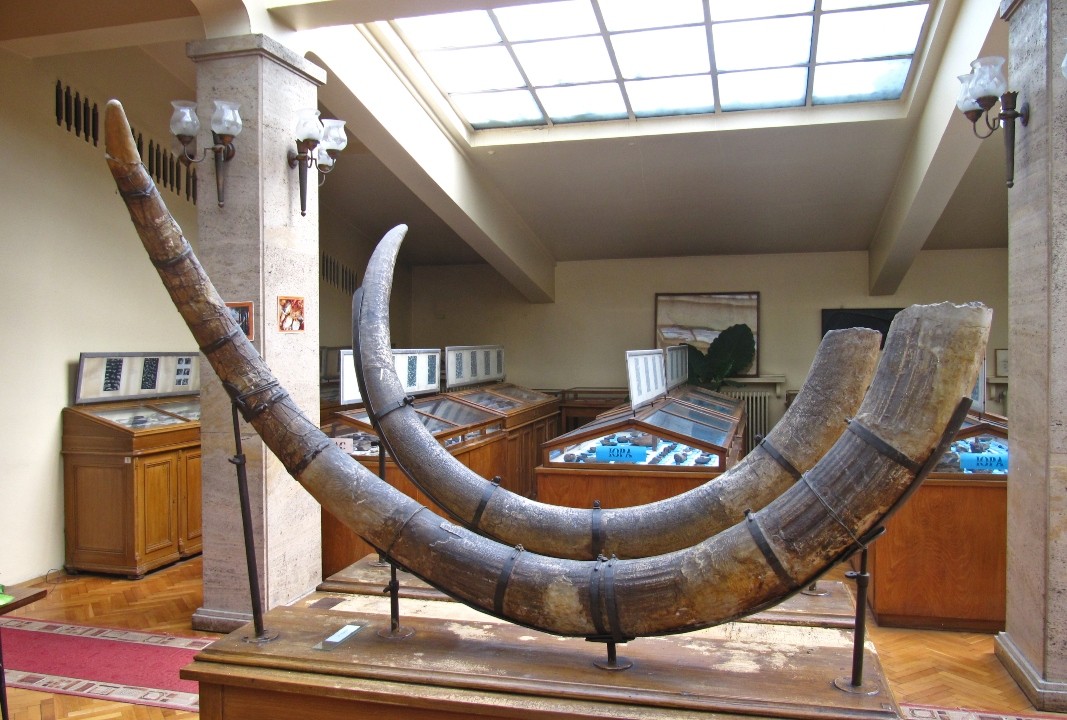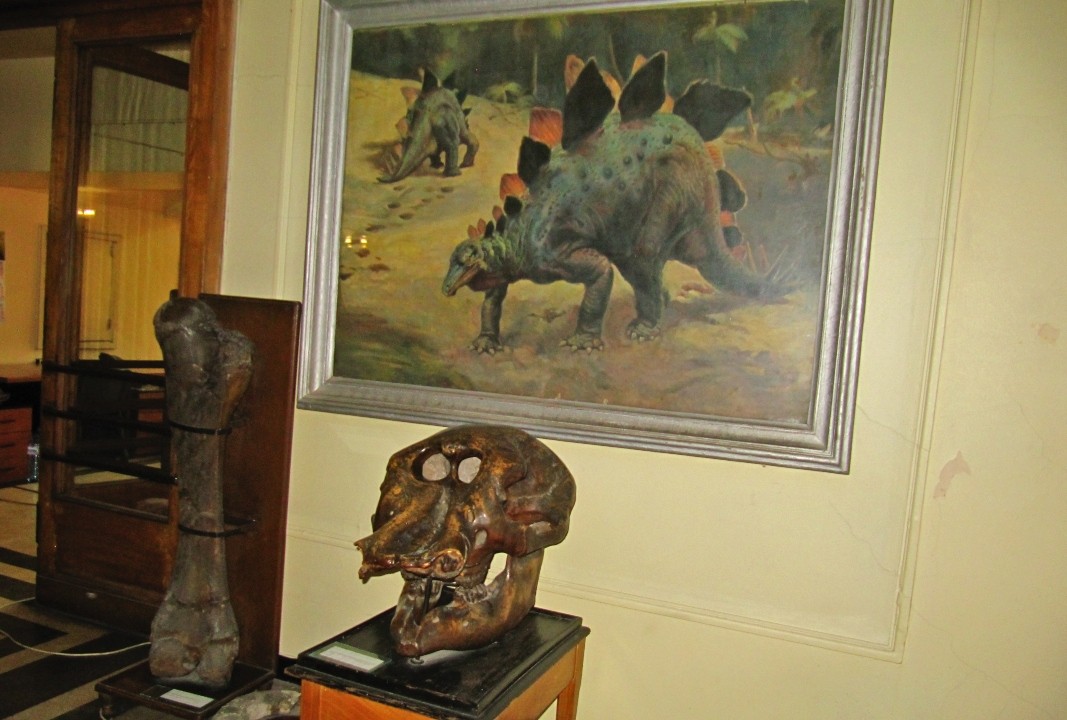In 1965, a biology teacher from the town of Assenovgrad ran across a gigantic skeleton in the region of the village of Ezerovo. During a summer expedition with his students, Dimitar Kovachev discovers the world’s most well-preserved deinotherium whose gargantuan posture nowadays welcomes visitorsin the Museum of Palaeontology and Historical Geology at Sofia University “Saint Kliment Ohridski”.
The temple of the mind, which every university needs to be, keeps testimonies of the presence of brilliant intellects from all segments of knowledge. Yet, hardly anyone could imagine that the dome in the university’s Northern wing would preserve a place which brings time back to prehistory.
“The museum of palaeontology and historical geology started with a small collection of specimens gathered primarily by the first Bulgarian geologist prof. Georgi Zlatarski,” says Dr Svetlozar Seferinov, palaeontologist and museum curator. “In the beginning, collections were bought from abroad for students to get acquainted with the basic animal species. Consequently, with the affirmation of our Geology department, various fossils were gradually collected. Almost all specimens preserved in the museum are from Bulgaria and some have been even discovered here for the first time and have been given Bulgarian names. We have well-presented flora and fauna – among everything, most well-studied and numerous are the ammonites. Of course, we have collections of other organism groups such as belemnites and corals. In the museum’s lobby, one can see the remains of mammals once common on Bulgarian lands.”
A four-metре skeleton with an open maw, gigantic tusks and legs, resembling a bird’s foot, is commanding respect when you look at it from the museum’s grating. The pride of the palaeontologists – the deinotherium – is from the Proboscidea family, and represents a 45-year-old specimen that lived 10 million years ago, at the end of the last Ice age.

“The deinotherium is one of the few exhibits in the world to have such a high level of preservation – 90% – and that makes it unique,” says Dr Svetlozar Seferinov. “Its skeleton was discovered by accident and after a long period of cleaning and stuffing, it was exhibited in the museum. The deinotherium is a herbivorous animal, a genus to contemporary elephants and to some extent, it shares common traits with them. Numerous parts of skeletons, teeth and tusks have been discovered.”
When prehistoric species were roaming our part of the earth, the climate here was close to this of an African savannah. According to the scientist, for this reason, these species became predecessors to the animals that currently inhabit the African continent,
In the mammalian department visitors can see remains of the ancient horse hipparion, fossils of mammoths, mastodons, anancuses, zygolophodones, as well as fragments of skeletons of ancient rhinos, giraffes, wild hogs, hyenas and bats. One of the most interesting specimens is the almost entirely preserved dolphin skeletonfound near Bulgaria’s seacoast town of Balchik. Examples of fossil plants and protozoans (microscopic-scaled organisms) are also among the precious specimens of the palaeontological exhibition.

The museum also boasts a rich collection related to geology. In it visitors can see the most substantial Bulgarian collection of geologic maps, while in the oldest of these, information about territories beyond Bulgaria’s present-day borders can be found.
The exposition halls contain more than 200 thousand exhibits as collections continue to grow owing to the palaeontologists.
“The fossils are exemplars of national importance since they show what life and the world of plants on Bulgarian lands were millions of years back in time,” adds Dr. Svetlozar Seferinov and recommends that everyone shoulddrop by the University dome at least once.

English version Boris Totchev
Photos: gpff.gea.uni-sofia.bg / Museum of Palaeontology and Historical Geology, Sofia UniversityThe newest exhibition at the National Museum of Military History in Sofia, 'War and the Creatives: A Journey Through Darkness' opens today, offering free entry as a gesture to those who were unable to visit during the recent renovations. Rather than..
A 5,000-year-long history lies hidden in the ruins of the medieval fortress “Ryahovets” near the town of Gorna Oryahovitsa where active excavations began ten years ago. On this occasion, on November 17, the Historical Museum in Gorna Oryahovitsa..
Just days ago, archaeologists uncovered part of the complex underground infrastructure that once served the Roman baths of Ratiaria - one of the most important ancient cities in Bulgaria’s northwest. Founded in the 1st century in the area of..

+359 2 9336 661
